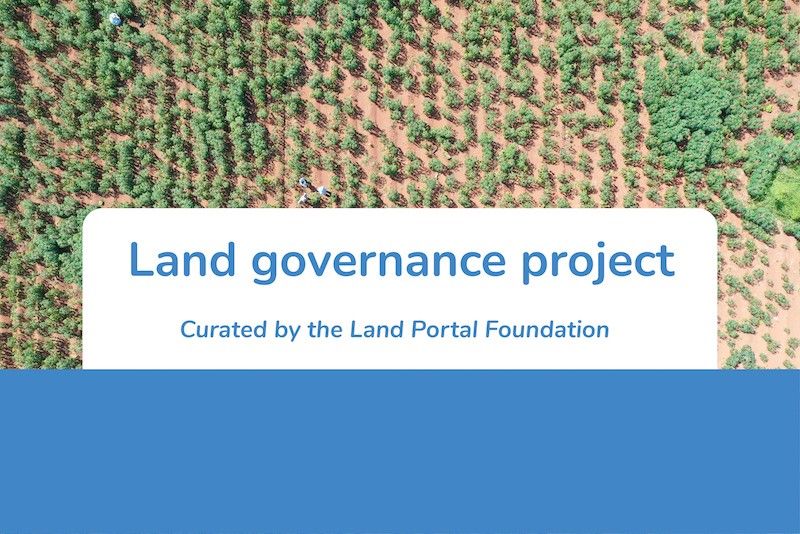Community / Land projects / Sustainable Luangwa: Securing Luangwa's water resources for shared socioeconomic and environmental benefits th
Sustainable Luangwa: Securing Luangwa's water resources for shared socioeconomic and environmental benefits th

€2561761.837
05/22 - 06/26
Ativo
This project is part of
Implementing Organisations
Donors
Data Providers
Objectives
To reduce forest and land degradation of the Luangwa Upper Sub-Catchment for enhanced protection of water resources, biodiversity and associated community livelihoods
Other
Note: Disbursement data provided is cumulative and covers disbursement made by the project Agency.
Target Groups
Beneficiaries of the project will consist of communities resident in the project target area in the Luangwa Upper-Sub-catchment area in Mafinga District, and downstream populations in the Luangwa Catchment. The communities in the Upper Sub-catchment will benefit directly through the project’s support for more sustainable and productive land uses including climate resilient conservation agriculture practices, community forestry management and other forms of sustainable livelihood together with improved marketing links. The establishment of community forest agreements under the Forestry Act (2015) confers benefits in the form of the rights to form Community Forest Management Groups, the right to issue community permits and collect revenue for forest products and uses; secure tenure through forest user rights; and economic rights for forest uses and products including rights to harvest and trade in forest products; and rights to control access through development and enforcement of local rules to facilitate effective management of the forest. Approximately 2,500 local people are estimated to be the direct beneficiaries of these activities, including at least 50% women. The improved sustainability of catchment management will also help to secure river headwater flows for local as well as downstream use, and the retention and restoration of forest cover will provide ecosystem-based adaptation benefits to local communities, enhancing their climate-resilience. A further 100 government staff at district, provincial and national levels will benefit from capacity development support. The Luangwa river is an essential source of water for adjacent populations, with c.1.8 million people residing in the Luangwa Catchment[1], providing water for irrigated agriculture[2],[3], household use and hydropower[4],[5],[6] in the downstream area of the catchment. Consequently, improved protection of the headwaters and sustainable land management in the Luangwa Upper Sub-Catchment will contribute towards water and food security for these downstream human populations. The river’s seasonal changes support vibrant communities that are spread across 25 chiefdoms, as well as a growing $27 million tourism industry that is based on some of Africa’s most valued wildlife populations including some of the highest concentrations of elephants and hippos in Africa, and globally important biodiversity assets that include the Luangwa Floodplains Ramsar site [7], [8], six National Parks, eight Game Management Areas, and National Forest Reserves covering some 68,812 km2 - around 50% of the total catchment area. A recent study of the benefits of forest ecosystems in Zambia[9] included consideration of soil erosion and transport modelling (using InVEST) through which it was estimated that current rates of sediment output nationally are in the order of 250 million tonnes (average 2.23 tonnes per ha), while forests retain a further 274 million tonnes, generating a cost saving in the order of US$247 million per annum. It also noted that the loss of forest cover over large areas could result in reduced precipitation in the region, impacting on flows, water yields and hydropower generation, and driving up the costs of electricity. The project approach will contribute towards such benefits, although related economic valuation details are not available specifically for the Luangwa catchment. [1] World Bank. 2010. The Zambezi River Basin: A multi-sector investment opportunities analysis. State of the Basin, 3. [2] Extraction for irrigation is currently low, ~120 km3 annually, but the potential for extraction is high. [3] World Bank. 2010. The Zambezi River Basin: A multi-sector investment opportunities analysis. State of the Basin, 3. [4] Three small hydropower stations are located on tributaries of the Luangwa river, Lusiwasi (12 MW) operated by ZESCO; Mita Hills (24 MW) and Mulungushi (32 MW) operated by Lunsemfwa Hydropower Company. Source: http://www.warma.org.zm/catchments-zambia/luangwa-catchment-2/ [5] Global CSS Institute. 2012. A risky climate for southern African hydro: assessing hydrological risks and consequences for Zambezi River basin dams. Available online at: https://hub.globalccsinstitute.com/publications/risky-climate-southern-african-hydro-assessing-hydrological-risks-and-consequences-zambezi-river-basin-dams/ [6] World Bank. 2010. The Zambezi River Basin: A multi-sector investment opportunities analysis. State of the Basin, 3. [7] The Luangwa Floodplains is Ramsar site no. 1660, WDPA ID 903030. [8] The Annotated Ramsar List: Zambia. Available online at: http://archive.ramsar.org/cda/en/ramsar-documents-list-anno-zambia/main/ramsar/1-31-218%5E15789_4000_0_ [9] Turpie J, Warr B, Ingram JC 2015. Benefits of forest ecosystems in Zambia and the role of REDD+ in a Green Economy transition. UNEP, Nairobi.




